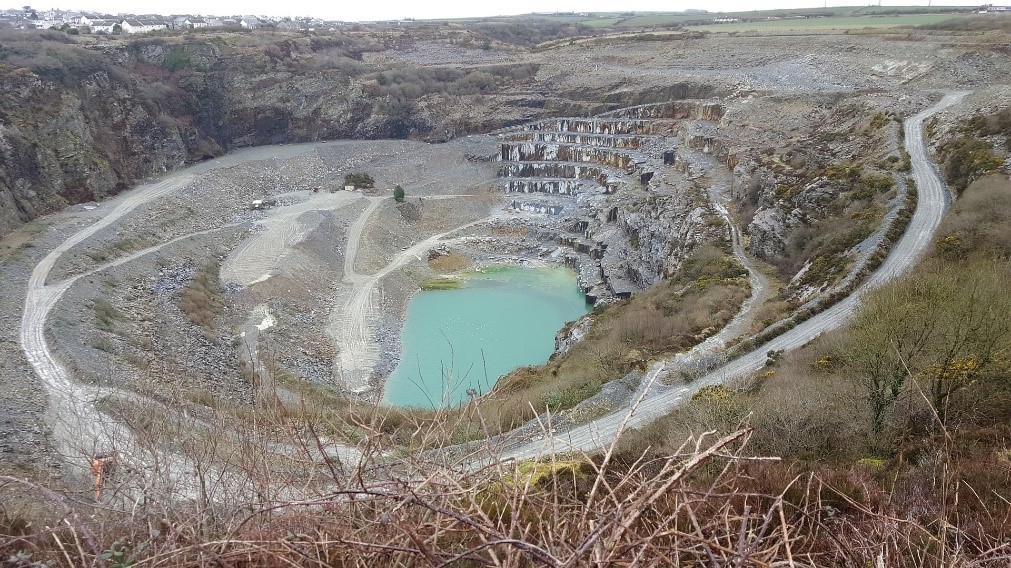Along with other industries in the UK, the Industrial Revolution of the late 18th century saw the slate trade boom. However, it’s worth noting that this wasn’t the birth of slate being used nationwide. Instead, there are signs that slate had been quarried for use across the UK from as early as the 3rd century.
The Roman fort of Segontium in northern Wales shows signs of slate having been used at the time. It was this same area which saw massive growth as a result of the impending Industrial Revolution.

Big Change in Britain
The Industrial Revolution, which lasted from around 1760 to 1840, saw tremendous growth in a number of British industries, notably iron processing and chemical manufacture. This great change was brought about through adopting new mechanical engineering techniques, and Britain soon grew its trade worldwide. A direct result of this was more jobs and more money for the working classes.
In turn, more people moved to Britain, and more came to be able to afford better living conditions. This had a resulting knock-on effect on the slate industry, which was suddenly needed to supply roofing for new houses across the country.
Wales to the Rescue
The most notable of quarries that were used to support this demand for slate was the Great New Quarry, situated in Dinorwig, again in northern Wales. The quarry was opened in 1787 and grew rapidly in size. By the late 1800s, reports show that over 3,000 men were employed by the quarry to keep up with the continued demand for slate.
This was not the only quarry to supply the growing need for slate, however, although Wales did come to represent around 80% of the total slate output of the time. The county that housed the Great New Quarry, Caernarfonshire, was by far the biggest producer within Wales.
Difficulties in Mining Slate
Slate can be a fairly brittle stone in certain circumstances, and mechanising the process used for splitting slabs of slate into tiles suitable for roofing and other such proved to be a fairly difficult task. Talented stone masons were heavily relied upon right into the nineteenth century for their ability to shape the slate to the needs of the British public.
In truth, there is a lot of waste slate that is created when quarrying for saleable slate. One website recorded that even in the post-millennium days, slate working creates 6 million tonnes worth of waste slates every year.
Sustained Growth
The end of the Industrial Revolution didn’t mark the end of the booming slate industry in Britain. Instead, growth actually continued way up until the end of the 18th century. Reports from 1898 show that Wales produced an astonishing 485,000 tonnes of slate. This marked the highest year of output for Welsh slate and this monumental feat came as a result of 17,000 employed workers.
Today, the production of slate in Wales is much less, and instead, some of the old quarries have been turned into tourist attractions. However, Welsh slate is still available and highly regarded as one of the most prestigious slate variations in the world, supplying materials to many of the worlds greatest architectural projects and stockists.
Slate Quarries Outside of Wales
Whilst Welsh slate is heralded worldwide for its quality and colours, slate is a fairly common stone worldwide. In America, it was first mined in Pennsylvania. In Europe, Spain was the largest provider of slate for many years. In Britain, Welsh slate was heavily relied upon, but quarries in the Lake District are not uncommon. The inactive quarry in the Old Man Complex of Coniston is part of the popular hiking route in this area, and thus is regularly visited and photographed.
These slate quarries are often quite an impressive spectacle, but the mining usually continues below the surface as many quarries turned to seeking their slates underground during the industrial revolution. In Hodge Close quarry, these tunnels have become flooded and are now a popular destination for divers.
In this way, the requirements for slate in the industrial revolution have provided our country with more than roofing materials; these quarries have become a part of our history, a place to travel to for a day out with friends and family.
For more info on Welsh slate and our other top quality slate range (for fireplaces or flooring, for example) check out our about slate page and view our selection of natural roofing slates. If you’re not sure what you’re looking for and need some assistance, feel free to contact us today.


